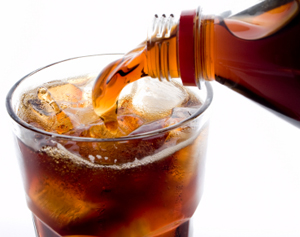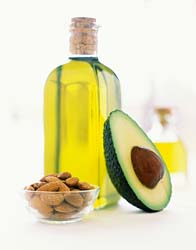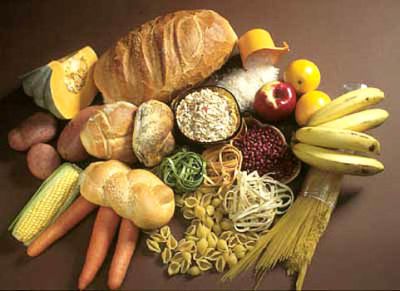
Today I’m going to share 4 tips with you to help improve overall health and weight loss. Next week we will talk about portion sizes, how much of each food group we should eat each day. And I’ll give you meal and snack ideas and a meal plan to help get you started.
1. CONSIDER HOW MUCH ENERGY INTAKE IS COMING FROM WHAT YOU DRINK
Our thirst mechanism is different to our hunger mechanism and the body doesn’t recognise that we are contributing to our energy intake when we drink it in a liquid form. When we drink high energy drinks, we generally don’t balance this out by cutting down on what we eat. Top of the list is sugar-sweetened beverages. This is the only food that has (yet) been linked to weight-gain and the overweight & obesity crisis most western nations are facing.
Sugar-sweetened beverages are drinks that contain added sugar, (e.g. sucrose, fructose, high-fructose corn syrup or fruit juice concentrate).
Sugar sweetened beverages include
- energy drinks,
- vitamin and sports drinks,
- flavoured water,
- fruit juices
- carbonated soft drinks,
- iced teas,
- cordials and squashes.
Also consider other drinks that could be contributing to over consumption of energy like alcohol (which is high in sugar), lattes, cappuccinos and hot chocolate etc.
Many of these drinks also contain ingredients like, caffeine, preservatives, additives, artificial colouring, artificial flavouring and high fructose corn syrup. On average people who are overweight over consume approximately 300 calories per day and on average there are 150-200 calories per soft drink.

Fruit juices and juice drinks contain as much energy and sugar as carbonated drinks. For example
- A serving of coke 350ml has 10 teaspoons of sugar,
- 350ml of apple juices also has 10 teaspoons,
- A 350ml serving of orange juice has 8 teaspoons.
When fruits are juiced one of the most beneficial parts (the fibre) is thrown in the bin.
So what can you have if you feel like a flavoured drink.
- Have a splash of juice with some sparkling water,
- Add herbs and fruits to water for example mint, ginger, kiwi fruit, berries. They honestly taste delicious,
- Try adding lemon and lime or ginger to sparking water,
- Drink herbal teas or iced herbal teas,
- Try juicing vegetables, which are much lower in sugar and energy.
2. LOW FAT MEANS HIGH SUGAR
When food manufacturers lower the fat content of a food they regularly increase the sugar content to make it more palatable. Low fat products have been around for many years and if they worked, we would have the answer and our weight wouldn’t be increasing. Research now shows that when low fat diets products became a fad, the fat content of people’s diets didn’t change. This is because we are able eat more low fat products before becoming satiated or feeling unwell. Instead people compensated by increasing their carbohydrates which meant fat remained the same and sugars within diets rose, increasing obesity and related chronic diseases.
In the supermarket compare the sugar content of low fat yoghurt and natural yoghurt. A natural yoghurt will contain 4.7g sugar per 100g while its low fat counterpart can often be treble this. This is the same for low fat sauces and other products too. Healthy eating involves moderation. It is better to have a moderate amount of a full fat product than it is to overload on low fat ones, which could ultimately make your diet high in sugar. You will feel more satiated and fuller consuming full fat products and find it more difficult to over consume them.
Plus we now know that not all fats are equal and some are actually beneficial to health and weight loss including omega 3 fatty acids and monounsaturated fats. The mediterranean diet which is one of the healthiest in the world is rich in these.
So choose a moderate amount of full fat products, these will not only taste better and help you to feel satiated, they will also fill you up in-between meals. And include healthy fats like avocados, nuts, seeds, olives and olive oil.

3. REMOVE REFINED CARBOHYDRATES FROM THE DIET & UNDERSTAND THE QUANTITY OF STARCHY CARBOHYDRATES WE SHOULD CONSUME
The amount of sugar humans consumed has risen dramatically over the last 20-30 years, resulting in an obesity and chronic disease epidemic. Our bodies are not designed to cope with sugar in these quantities and, when over-consumed, the body stores the sugar as fat, in particular around the abdominal area. Refined carbohydrates, which have been stripped of beneficial nutrients and fibre, are basically sugar. They are nutrient poor empty calories.
Starchy carbohydrates include rice, pasta, potatoes, bread, oats and other cereals.
One serve is equal to
- 1 cup of oats or cereal,
- ½ a cup of cooked pasta or rice,
- 1 medium potato,
- 1 large or 2 small slices of bread.
Ideally for weight loss you want to be consuming no more than 2-4 serves per day (depending on the individual). Compare this to what you are eating now. The starchy carbohydrate content should be around 1/4 of your plate.
For optimal weight loss chose complex nutrient rich carbohydrates like quinoa, buckwheat, brown rice, wholegrain rye, sourdough rye, wild rice, sweet potato and legumes like lentils.

4. BECOME AWARE OF SUGAR ON FOOD LABELS
Food labels list ingredients in order of quantity with the highest first and lowest last. Companies regularly list sugar in many different forms to stop sugar appearing at the top of the list. There are lots of different words used to describe sugar – corn syrup, dehydrated cane juice, dextrin, dextrose, fructose, fruit juice concentrate, glucose, high fructose corn syrup, HFCS, honey, hydrolysed starch, invert sugar, maltodextrin, malt syrup, maltose, molasses, raw sugar, sucrose…the list goes on. These are all sugar.
Look at the sugar content on the food label, which is listed under total carbohydrates. The amount per 100g/ml will be the percentage of sugar that is in the product. If it says 25g or 25 ml then a quarter of the product is sugar! Low sugar products contain around 5g per 100g/ml.




Write a reply